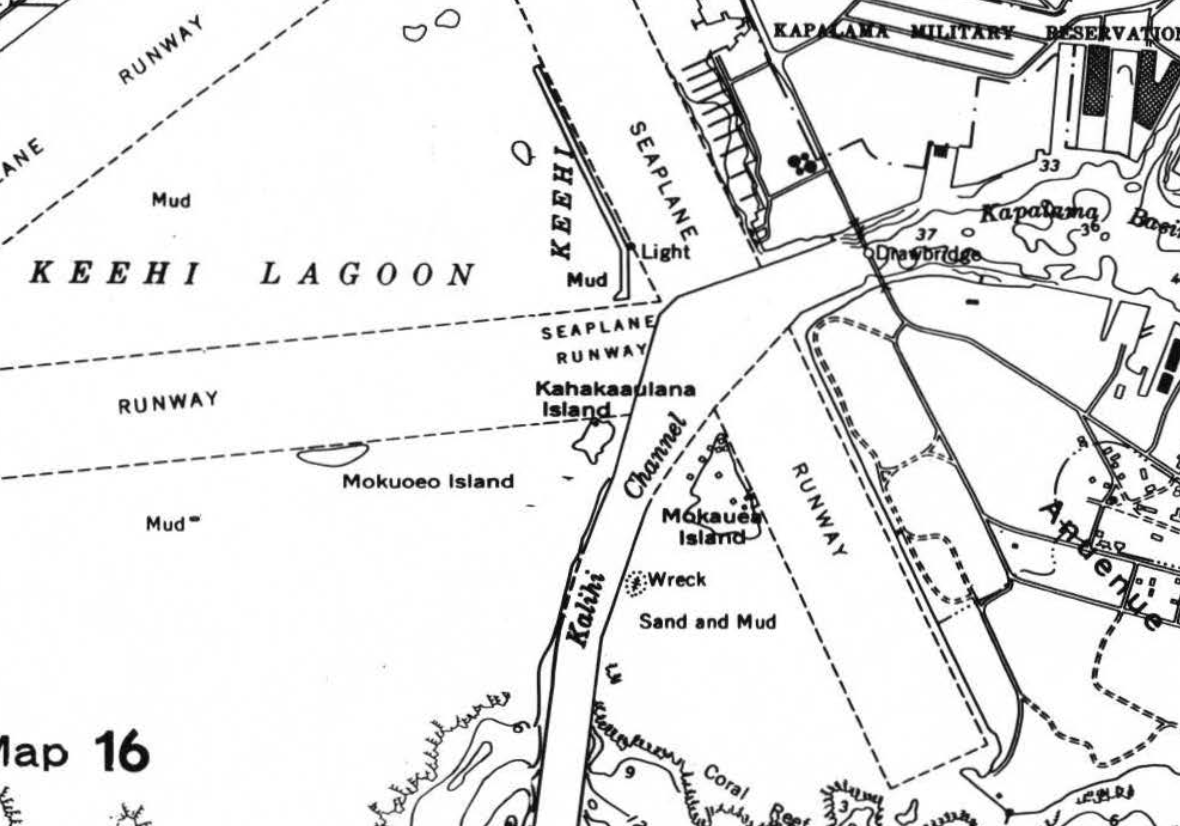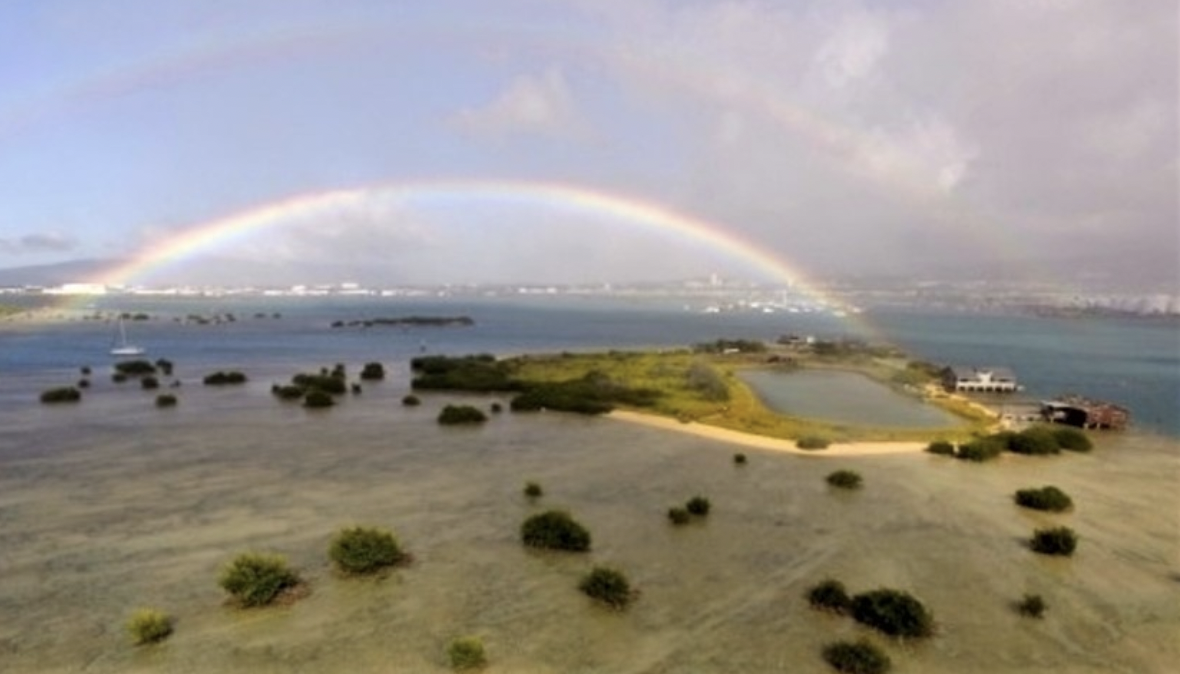Muriel Lupenui
Ka noho ʻana i Kahakaʻaulana
a me Mokauea
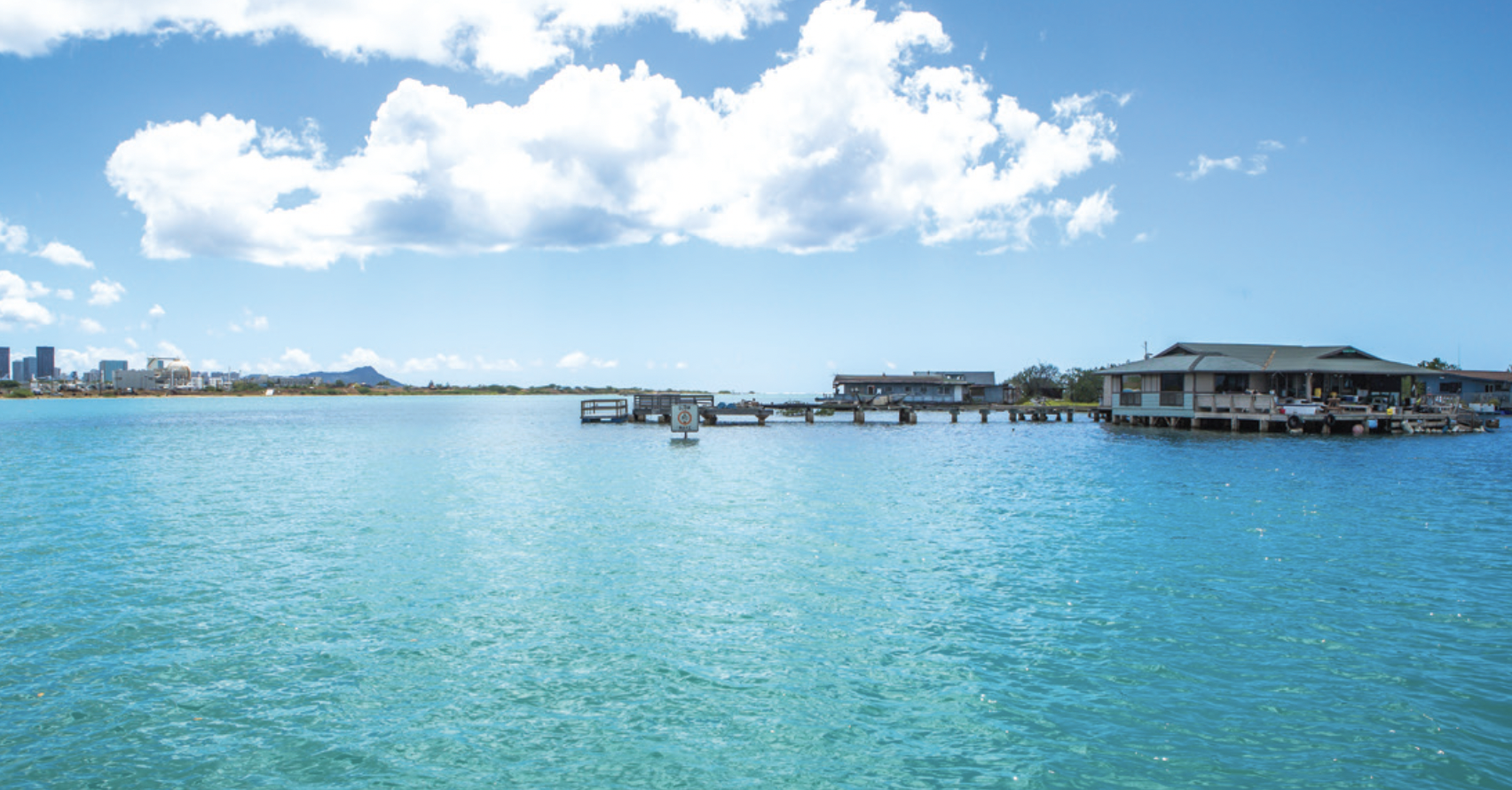
Mānaleo Series
These short clips of native speakers on Ka Leo Hawaiʻi talking about their lives and practices are invaluable windows into our past, our language, and ourselves. Our mahalo kūhohonu goes out to Larry Kimura and Puakea Nogelmeier for their foresight in preserving the voices of these hulu kupuna.
Listen and read along:
1. Press "listen in browser" or the orange arrow on the sound file below (make sure your sound is up).
2. Scroll down and read along in the language of your choice.
3. Repeat as needed.
4. Remember to select "listen in browser" to stay in this site.
Muriel Lupenui talks about life on Kahakaʻaulana when she was young and the Mokauea evictions of 1975.
Muriel Lupenui: Well, kēia moku ʻāina ʻo Kahakaʻulana [Kahakaʻaulana], kēia manawa, ʻo Mokauea. A, ko mākou noho ʻana i waho, i kēia ʻāina, ʻekolu hale wale nō i luna o kēia ʻāina. Akā, nā hale waiho ʻia, aia nō i loko o ka wai, but ko mākou, aia i ka ʻāina. ʻO Kalākaua, kāna hale, ʻo ia ka mua, a ko mākou hale, ma waena. ʻO ia ka noho ʻana o mākou i ka wā liʻiliʻi. A, ko mākou poʻe, poʻe lawaiʻa kēlā no Kūhiō. So, inā mamake ke aliʻi Kūhiō [i ka] iʻa, well kona iʻa puni, he pākiʻi.
Larry Kimura: Pākiʻi. Kēlā ʻano iʻa pālahalaha, i loko o ke one.
Muriel Lupenui: Yeah. So, ʻo ia ka noho ʻana o mākou i leila. Aloha nō hoʻi ka noho ʻana, a ka ʻike ʻana i ka ʻāina, hanaʻino ʻia. So, kēia hele ʻana oʻu, aloha nō hoʻi. Inā hiki i ke aupuni e noʻonoʻo, waiho kēia ʻāina, he ʻāina lawaiʻa no kākou Hawaiʻi. Aia nō iā lākou. Aia nō ke aloha iā ʻoukou i waho, e nānā nei, hoʻolohe nei, me ke aloha, ke noi nei mākou iā ʻoukou, ke aloha o ka ʻāina, ʻo Mokauea.
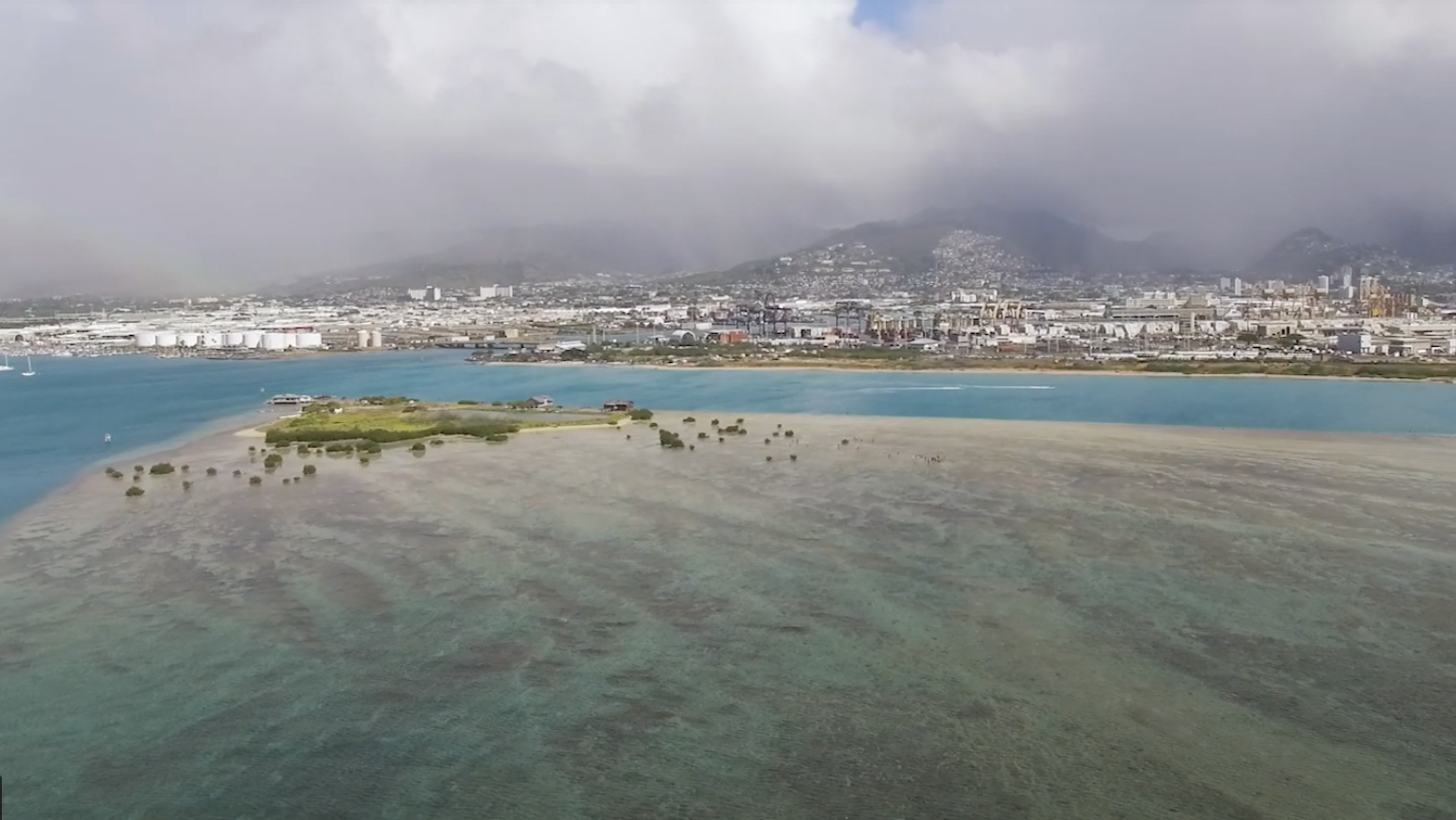
Contemporary houses on Mokauea.
Unuhina (Translation):
Muriel Lupenui: Well, [there was ] this island, Kahakaʻulana [Kahakaʻaulana], now there is just Mokauea. When we lived out there, on this island [Kahakaʻulana], there were only three houses on this land. The houses that were there were in the water, but ours was on land. Kalākaua’s house was the first one and our house was in the middle. That was our lifestyle when we were young. Our people, they were fishing people for Kūhiō. So if the royal, Kūhiō, wanted fish, well, his favorite fish was flounder.
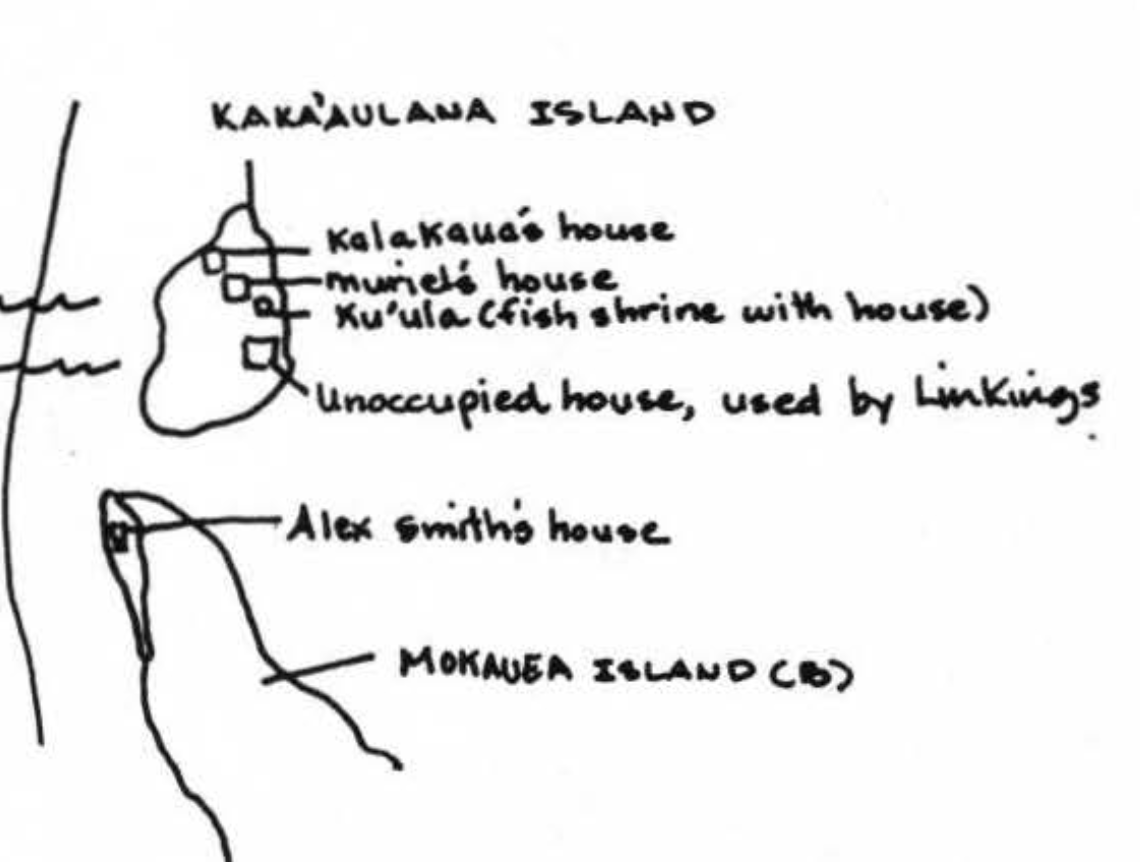
Kalākaua's boathouse. This was different to his home on Mokauea.
Larry Kimura: Flounder. That type of fish that’s flat, lives in the sand.
Muriel Lupenui: Yeah. So, that’s how it was when we lived there. I felt so much sadness for the time we lived there, when I saw that the land had been destroyed. So, on this trip I took [back to the island], I was so sad. It would be wonderful if the government could think about setting this land [Mokauea] aside as a fishing place for us Hawaiians. The power to do it rests with them. And the compassion is with you all out there, who are watching and listening, it is with aloha that we ask you for your compassion for the land [your support in the battle for], Mokauea.

Contemporary houses on Mokauea.

Aerial view of Mokauea.
Contemporary houses on Mokauea.

Hand drawing by Muriel Lupenui showing, prior to dredging, the proximity of her island to Mokauea. Taken from a historical report by Nathan Nāpōkā.
Kalākaua's boathouse. This was different to his home on Mokauea.

Contemporary houses on Mokauea.
Contemporary houses on Mokauea.
He ʻĪnaʻi
Muriel Lupenui and her family lived on Kahakaʻaulana because the island was awarded to her ancestor, Pūhene, through an LCA during the māhele. She lived there from 1912 unti 1941 when she was told to leave by the government who wanted to put in a runway. "I moved out October 1941 because the Governor told me to get out." The State then dredged the island, destroying it. Neighboring Mokauea was very close and part of the same fishery her family had always accessed. Families continued to live on Mokauea after Mrs. Lupenui left Kahakaʻaulana.
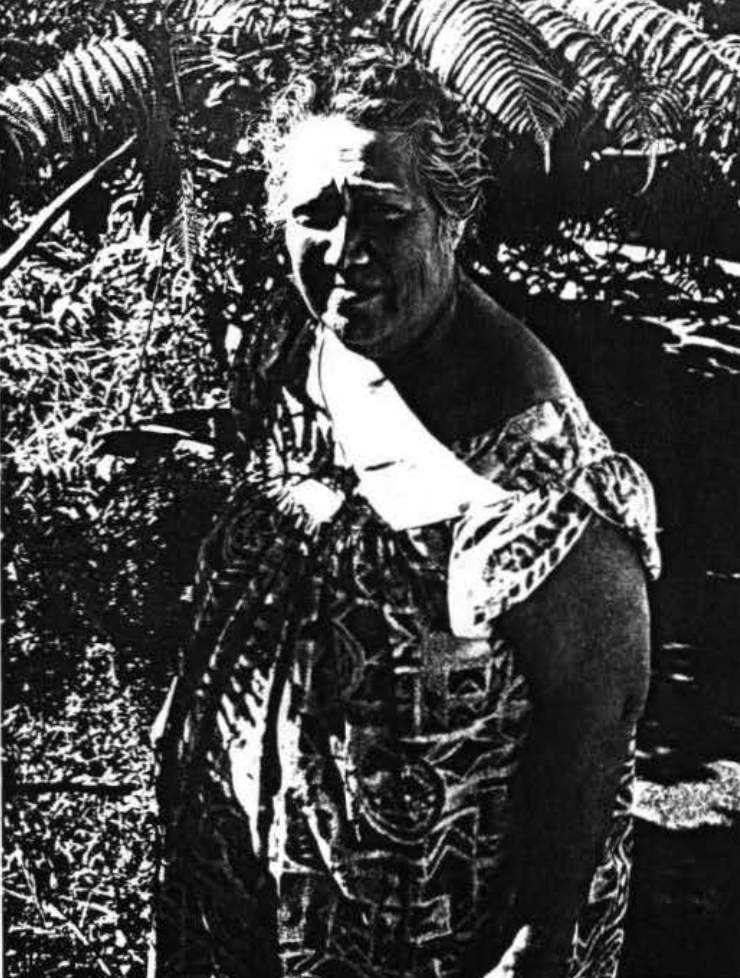
Muriel Lupenui.
As Mrs. Lupenui shares in the recording, Kalākaua had a house on Kahakaʻaulana. His Queen, Kapiʻolani, however, had her own house on Mokuoʻeo which later became known as Damon Island.
"He hale nui, pāpaʻi hale nui. Ka noho ʻana kahakai. So, hoʻi ʻo ia i kona hale a hoʻi nō Kapiʻolani i Mokuoeʻo."
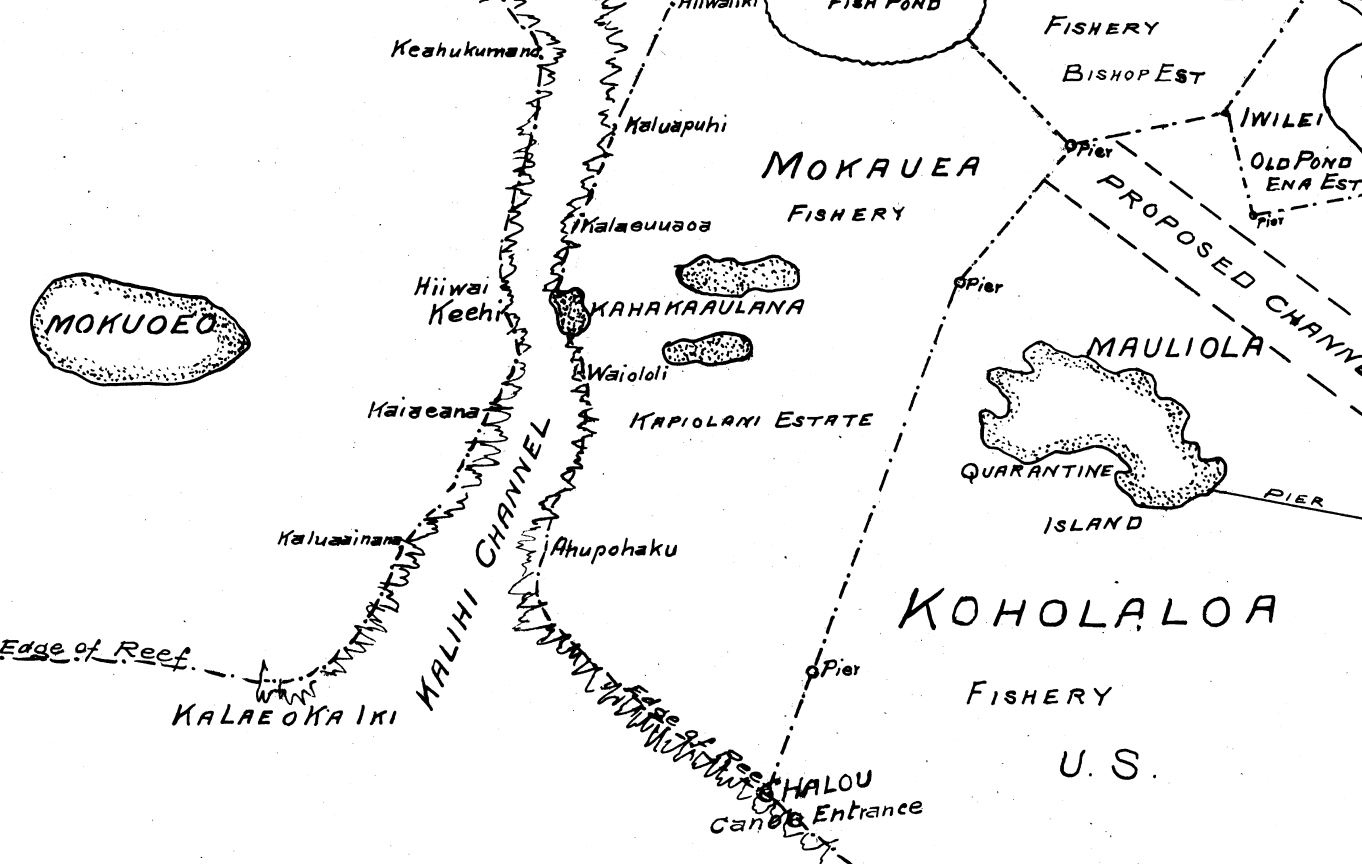
The Mokauea fishery.
The lifestyle that Mrs. Lupenui experienced as a girl on Kahakaʻaulana was fast disappearing as she grew up. As we hear in this clip, when she went back to the island years after moving away, she was heartbroken at the changes that had been made to both Kahakaʻaulana and Mokauea.
She knew the pain of being evicted from her island, so she had aloha for the people of Mokauea that were experiencing the same during the time of her visit. The state had claimed the island and were evicting the Hawaiians who were living there. In 1975, they set fire to the homes of five families who Mrs. Lupenui says were moʻopuna (grandchildren) of people who used to live there.
Nui ka ʻāina i lawe ʻia. No ke aha?
Public outcry followed the burning of the Mokauea homes and the state stopped what they were doing. Hawaiians were vocal about the cultural significance of the area, so in 1976, they commissioned a historical and cultural study of the island and the surrounding waters. Nathan Nāpōkā, the sole Hawaiian working for the State Historic Preservation Office at the time, was given four weeks to produce the report (the source for the first three photos in this section). The amount of rich data he was able to gather over that time is astounding and far beyond what the government was expecting.
"The final result of my findings assisted in allowing the fishing community that was kicked out by the State to be transported back to the island. They were given a 65-year lease."
Historian Nathan Nāpōkā spent hours interviewing Mrs. Lupenui and other kamaʻāina of the area. His richly detailed report and the positive results it generated are a testament to the power of aloha. Although Mrs. Lupenui lost her home and ʻāina, her generous contributions to the report and her support of the Mokauea struggle helped other families not to lose theirs.
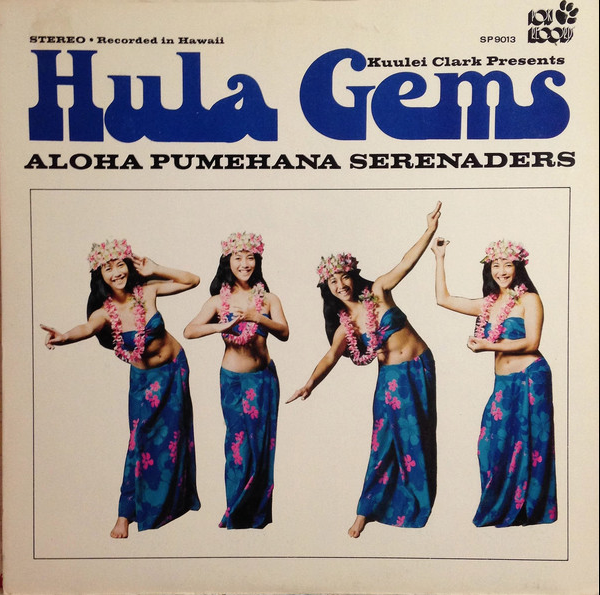
The beautiful mele "Mokuoeʻo", was written for the island across the Kalihi channel from Mokauea where Kapiʻolani's house was. The song was first recorded by Mrs. Lupenui's son, Daryl Lupenui, and the Aloha Pumehana Seranaders on the album Hula Gems shown above. You can hear it here if you fast forward the player to 45:22.
The name is also pronounced Mokuoʻeʻo by Kalehua Kaleikoa who lived on the island as a child. She is truly one of the most delightful mānaleo to listen to. Her stories about life on Mokuoʻeʻo can be heard here. If you'd like to hear a clip of her discussing lei ʻilima, you can find it here.
We edited this sound clip for brevity, but we strongly encourage you to listen to the full recording of Muriel Lupenui here on Kaniʻāina.
Na Hina Kneubuhl i kākau a hoʻonohonoho i kēia moʻolelo.
These pieces are all working interpretations. Should you see a kuhihewa, kiko hewa, or have any sort of manaʻo to share, please email kauamelemele@gmail.com - Mahalo!

Muriel Lupenui.
Muriel Lupenui.

The Mokauea fishery.
The Mokauea fishery.
